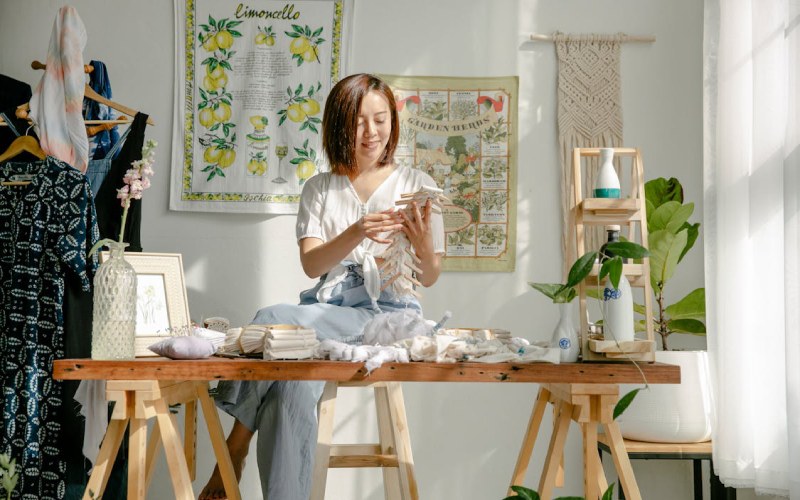Japanese culture is known for its rich history and intricate artistry, perfectly showcased through traditional clothing. Even in the fast-paced world of modern fashion, traditional Japanese clothing remains significant, celebrated for its unique styles and cultural significance. In this article, we’ll explore the timeless beauty of traditional Japanese garments, their origins, and how they continue to influence global fashion today.
A Journey Through History
Traditional Japanese clothing, known as wafuku, has evolved over centuries. Each piece holds a deep cultural meaning, and many styles are associated with specific occasions, social classes, or historical eras. These garments, from the elegant kimono to the minimalist yukata, reflect Japan’s craftsmanship, heritage, and spirit.
The kimono is the oldest traditional Japanese attire, which became a staple during the Heian period (794-1185). The word “kimono” literally translates to “thing to wear” and was originally worn by the aristocracy. Over time, its use expanded across social classes, becoming a symbolic garment for formal events, festivals, and ceremonies. Even today, the kimono represents Japanese culture worldwide.
The Kimono: Elegance and Grace
The kimono is undoubtedly the most iconic piece of Japanese clothing. It is a T-shaped, full-length robe with wide sleeves secured by an obi (belt). Kimonos are often made from silk and have elaborate patterns that signify different seasons, events, or personal milestones.
Wearing a kimono is more than just a fashion choice; it’s a ceremonial act. How it’s worn—how it’s folded, tied, and styled, speaks to centuries of tradition and symbolism. For instance, unmarried women typically wear furisode, a type of kimono with long sleeves, while married women wear tomesode with shorter sleeves.
Although kimonos are now worn primarily during special occasions like weddings, tea ceremonies, and festivals, they continue to inspire contemporary designers worldwide. Fashion houses and designers often incorporate kimono-inspired elements into modern fashion, blending traditional and contemporary aesthetics.
Yukata: Summer’s Simpler Style
While the kimono exudes elegance and formality, the yukata is its lighter, more casual counterpart. Traditionally worn during the summer months, yukata are made from cotton or synthetic fabric, making them more breathable and comfortable. They are commonly worn to summer festivals and casual gatherings.
Despite its simplicity, the yukata still carries a sense of style and tradition. It’s often paired with wooden sandals called geta and accessorized with a simple obi. Though it was once exclusively worn at home or to bathhouses, the yukata has since become a fashion statement during summer events and is popular with locals and tourists in Japan.
Hakama: The Symbol of Dignity
Another key piece of traditional Japanese clothing is the hakama, a pleated, wide-legged garment that resembles pants or a skirt. Originally worn by samurai to protect their legs while riding horses, hakama later became associated with formal events and ceremonies. Today, they are worn during martial arts practice, graduation ceremonies, and weddings.
There are two main types of hakama: umanoha (for martial arts) and andonbakama (for formal occasions). Both styles exude dignity and discipline, reflecting the honor and pride deeply embedded in Japanese culture.
The Obi: A Fashion Statement of Its Own
No discussion of traditional Japanese clothing would be complete without mentioning the obi. The obi is a wide belt wrapped around the waist to fasten the kimono or yukata. While its primary function is practical, the obi has also evolved into a fashion statement.
Obis come in various lengths, widths, and fabrics, and they can be tied in several different ways. The way an obi is tied can signify age, marital status, or even the formality of the occasion. Some styles, like the taiko musubi knot, are reserved for formal settings, while others are more playful and suited to casual occasions.
Traditional Japanese Clothing in Modern Fashion
Although traditional Japanese clothing is rooted in history, its influence on modern fashion is undeniable. Designers in Japan and across the globe often draw inspiration from the simple lines, intricate details, and bold patterns of wafuku. This cultural exchange has led to a fascinating fusion of East and West in contemporary fashion, with traditional Japanese elements appearing in everything from streetwear to haute couture.
In recent years, many have wondered: are chains acceptable fashion in Japan? While traditional Japanese clothing remains popular, modern accessories like chains have become more accepted, especially in urban fashion. Incorporating accessories such as chains with traditional clothing elements is a stylish way for individuals to express a unique blend of classic and contemporary trends.
Fashion brands have embraced Japanese clothing styles by incorporating obi belts, kimono sleeves, traditional prints, and even edgy accessories like chains into their collections. This blending of old and new has helped preserve Japanese heritage and given traditional clothing a modern twist that appeals to fashion enthusiasts worldwide.
Conclusion
Traditional Japanese clothing is more than just fabric; it’s a representation of Japan’s history, culture, and artistry. From the luxurious kimono to the casual yukata, these garments have remained timeless, influencing local and global fashion. As the world continues to explore the elegance of traditional Japanese clothing, its impact on modern style and culture will undoubtedly endure for generations to come.







